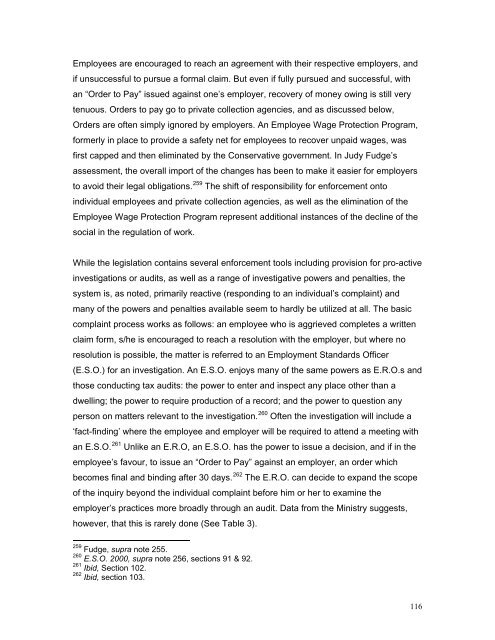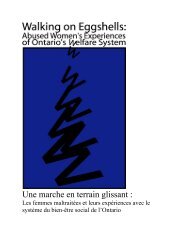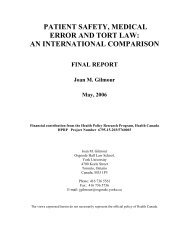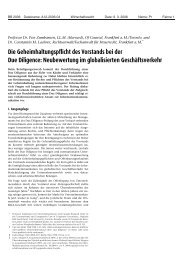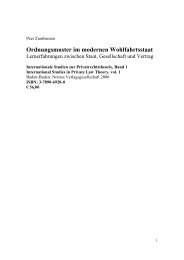Welfare Fraud: The Constitution of Social ... - York University
Welfare Fraud: The Constitution of Social ... - York University
Welfare Fraud: The Constitution of Social ... - York University
You also want an ePaper? Increase the reach of your titles
YUMPU automatically turns print PDFs into web optimized ePapers that Google loves.
Employees are encouraged to reach an agreement with their respective employers, and<br />
if unsuccessful to pursue a formal claim. But even if fully pursued and successful, with<br />
an “Order to Pay” issued against one’s employer, recovery <strong>of</strong> money owing is still very<br />
tenuous. Orders to pay go to private collection agencies, and as discussed below,<br />
Orders are <strong>of</strong>ten simply ignored by employers. An Employee Wage Protection Program,<br />
formerly in place to provide a safety net for employees to recover unpaid wages, was<br />
first capped and then eliminated by the Conservative government. In Judy Fudge’s<br />
assessment, the overall import <strong>of</strong> the changes has been to make it easier for employers<br />
to avoid their legal obligations. 259 <strong>The</strong> shift <strong>of</strong> responsibility for enforcement onto<br />
individual employees and private collection agencies, as well as the elimination <strong>of</strong> the<br />
Employee Wage Protection Program represent additional instances <strong>of</strong> the decline <strong>of</strong> the<br />
social in the regulation <strong>of</strong> work.<br />
While the legislation contains several enforcement tools including provision for pro-active<br />
investigations or audits, as well as a range <strong>of</strong> investigative powers and penalties, the<br />
system is, as noted, primarily reactive (responding to an individual’s complaint) and<br />
many <strong>of</strong> the powers and penalties available seem to hardly be utilized at all. <strong>The</strong> basic<br />
complaint process works as follows: an employee who is aggrieved completes a written<br />
claim form, s/he is encouraged to reach a resolution with the employer, but where no<br />
resolution is possible, the matter is referred to an Employment Standards Officer<br />
(E.S.O.) for an investigation. An E.S.O. enjoys many <strong>of</strong> the same powers as E.R.O.s and<br />
those conducting tax audits: the power to enter and inspect any place other than a<br />
dwelling; the power to require production <strong>of</strong> a record; and the power to question any<br />
person on matters relevant to the investigation. 260 Often the investigation will include a<br />
‘fact-finding’ where the employee and employer will be required to attend a meeting with<br />
an E.S.O. 261 Unlike an E.R.O, an E.S.O. has the power to issue a decision, and if in the<br />
employee’s favour, to issue an “Order to Pay” against an employer, an order which<br />
becomes final and binding after 30 days. 262 <strong>The</strong> E.R.O. can decide to expand the scope<br />
<strong>of</strong> the inquiry beyond the individual complaint before him or her to examine the<br />
employer’s practices more broadly through an audit. Data from the Ministry suggests,<br />
however, that this is rarely done (See Table 3).<br />
259 Fudge, supra note 255.<br />
260 E.S.O. 2000, supra note 256, sections 91 & 92.<br />
261 Ibid, Section 102.<br />
262 Ibid, section 103.<br />
116


